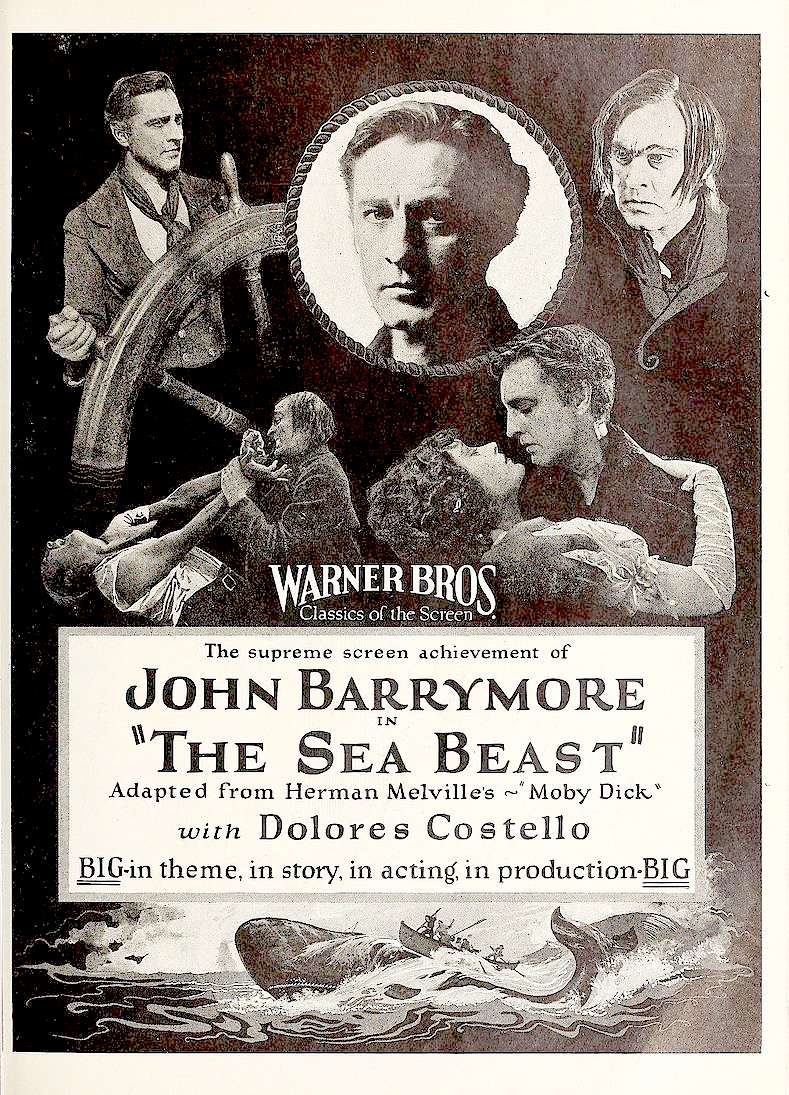
This silent screen adaptation of
"Moby
Dick" features John Barrymore in action as Captain Ahab Cooley, played against one of the most famous denizens of the deep, Herman Melville's great white whale.
THE
SEA BEAST 1926 FILM - WARNER BROTHERS
The Sea Beast is a 1926 American silent drama film directed by Millard Webb, starring John Barrymore, Dolores Costello and George O'Hara. The film was a major commercial success and one of the biggest pictures of 1926 becoming Warner Brothers' highest grossing film. The Sea Beast is the first adaptation of Herman Melville's 1851 novel
Moby-Dick, a story about a monomaniacal hunt for a great white whale. However, the film alters the novel's plotline by establishing prequel and sequel elements that are not in the original story
- such as the romancing of Esther and Ahab's safe return, respectively -
and substitutes a happy ending for Melville's original tragic one. Some of the characters in the film do not appear in Melville's original novel.
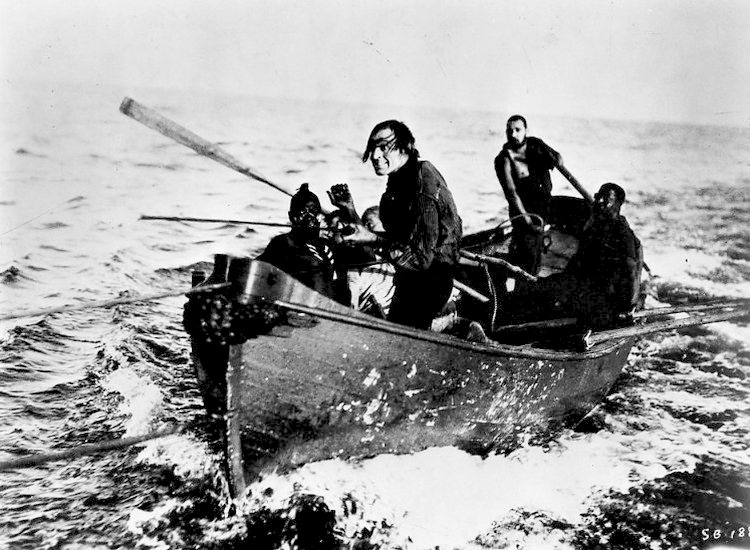
CAST
John Barrymore as Captain Ahab Ceeley
Dolores Costello as Esther Harper
George O'Hara as Derek Ceeley
Mike Donlin as Flask
Sam Baker as Queequeg
Sōjin Kamiyama as Fedallah
George Berrell as Perth/As Himself
Sam Allen as Captain
Frank Nelson as Stubbs
Mathilde Comont as Mula
James O. Barrows as Rev. Harper
Vadim Uraneff as Pip
Frank Hagney as Daggoo
Joyzelle Joyner as Dancer in prologue
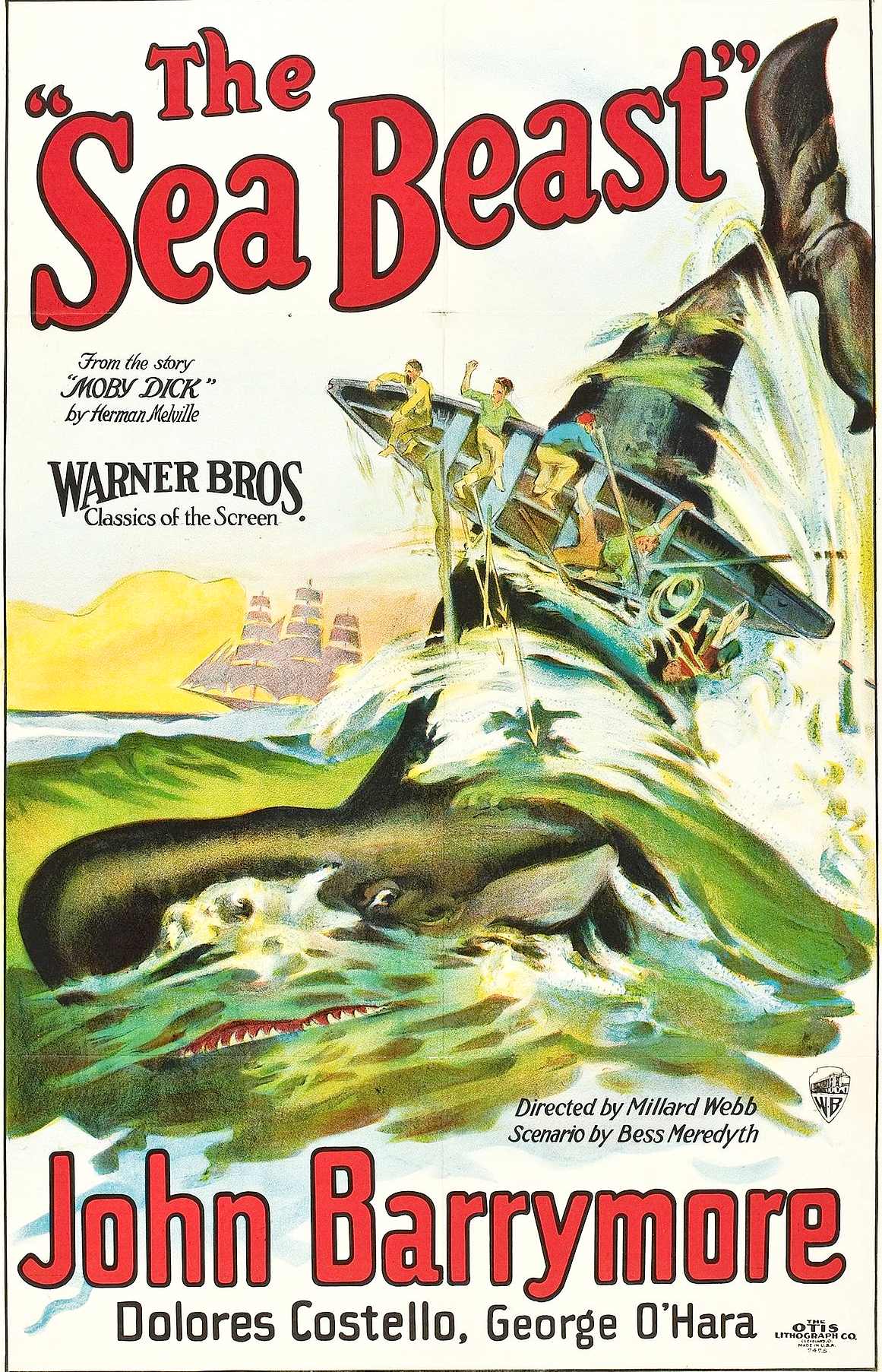
At the beginning of
this deep sea romance, Ahab and his step brother Dererk (George O'Hara) compete for the affections of a winsome minister's daughter, Esther Wiscasset (Dolores Costello). Meanwhile, the albino whale has been eluding harpooners, and bears the scars of many failed attacks against him. His fame has reached epic proportions.
One day, Ahab and Derek are on the same whaler as the whale hovers into view. With the visual drama enhanced by the water and pitching boat, Ahab raises his harpoon to kill the beast. At that moment, Derek pushes him overboard and Ahab loses a right leg to the whale. In this scene, Barrymore's portrayal of agonizing pain as an antiseptic is poured over what remains of his leg contributed to his fame as a silents actor. Not long after this incident, the shallow Esther rebuffs Ahab as her suitor once she catches sight of his peg leg.
Heartbroken at this turn of events, Ahab blames neither Esther nor his brother - instead he transfers blame and an undying hatred onto the whale. The following saga of Ahab's pursuit of the whale takes on the aura of a super-human quest, far beyond the proportions of its first motivation. One of the most popular of Barrymore's films, this version extends the story beyond the final battle of man versus whale in a variation on Melville's book.
PLOT
At the beginning of the story, Ahab (John Barrymore) and his half brother Derek (George O'Hara) compete for the affections of a winsome minister's daughter, Esther Wiscasset (Dolores Costello). Meanwhile, an albino whale has been eluding
harpooners, and bears the scars of many failed attacks against him. The animal's fame has reached epic proportions. One day, Ahab and Derek are on the same whaler as the whale heaves into view. Ahab raises his harpoon to kill the beast, but at that moment, Derek pushes him overboard and Ahab loses his right leg to the whale. Not long after this incident, the shallow Esther rebuffs Ahab as her suitor once she catches sight of his peg leg. Heartbroken at this turn of events, Ahab blames neither Esther nor his brother; instead he transfers blame and an undying hatred onto the whale. The following saga of Ahab's pursuit of the whale takes on the aura of a super-human quest, far beyond the proportions of its first motivation.
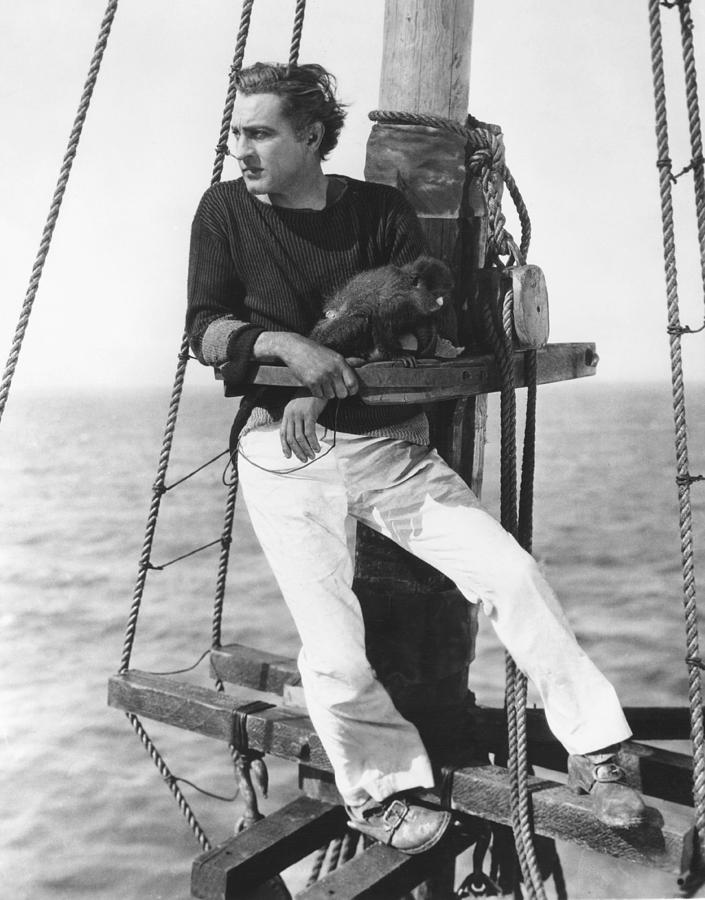
PRODUCTION
John Barrymore signed a three film contract with Warner Brothers in 1925 after the success of 1924's Beau Brummel. Barrymore had always wanted to do a film version of Moby Dick and insisted on making this film first rather than the prospected first contract film Don Juan. In retrospect and because of this delay, Don Juan became the first Warner feature to have the Vitaphone soundtrack rather than The Sea Beast.
One of the most popular of Barrymore's films, this version extends the story beyond the final battle of man versus whale in a variation on Melville's book. Adding publicity to the film was a bit of early Hollywood hype, unintentional though it may seem: the actress Priscilla Bonner was fired by Barrymore from the role of Wiscasset, in preference for his lover, actress Dolores Costello, and Bonner successfully sued the studio and won a considerable out-of-court settlement.
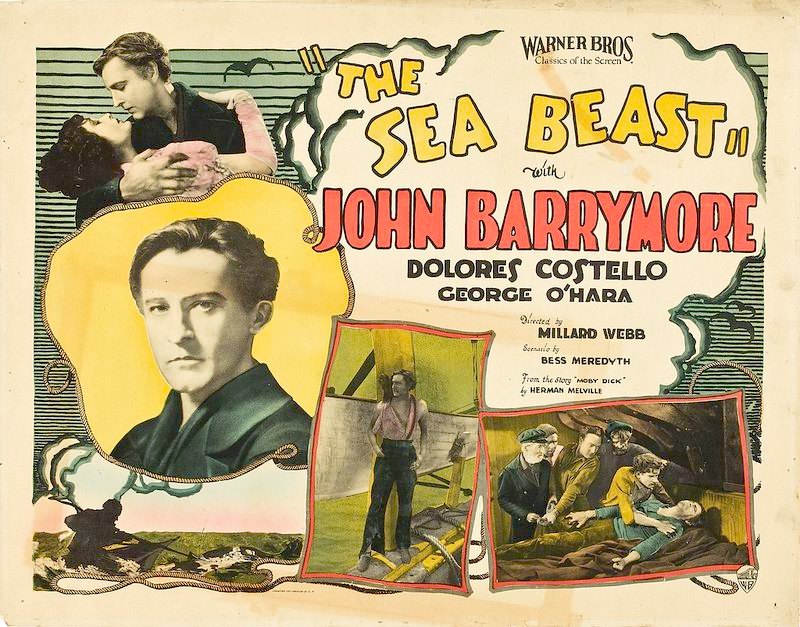
Adding publicity to the film was a bit of early Hollywood hype, unintentional though it may seem. The actress Priscella Bonner was fired by Barrymore from the role of Wiscasset, and in a curious parallel to Ahab and the mighty whale, she successfully sued the studio and won a considerable out-of-court settlement. Doubtless due to the popularity of this film, another was released in 1930 under Melville's original book title, with Barrymore again in the role of Captain Ahab.
Barrymore exploited the romantic scenes with Costello to their full potential in the film, displaying a "boyish enthusiasm" according to biographer Margot Peters, which made him fall out with Costello's mother. Barrymore drank heavily during the production of the film, and his eyes were constantly bloodshot, with stubble on his chin. Producer Jack L. Warner said "that's a great makeup job" to director Millard Webb, who retorted, "That's not makeup. It's a hangover". The ship used in the film, The Narwhal, was actually a former fighting ship with decks stained with blood from fights. The theme in the orchestral score is "Love's Old Sweet Song".
Due to the success of this film, an all-talking version was released in 1930 under Melville's original book title, with Barrymore again in the role of Captain Ahab. The 1930 film used the plotline of The Sea Beast rather than following Melville's novel. A German-language version, Daemon des Mers, was filmed simultaneously in Hollywood by Warner Bros. It was directed by William Dieterle, beginning his American career.
Genre: Action & Adventure, Classics, Drama
Directed By: Millard Webb
Written By: Bess Meredyth
In Theaters: Jan 15, 1926 Wide
On Disc/Streaming: Aug 21, 2007
Runtime: 100 minutes
Studio: Warner Bros. Pictures
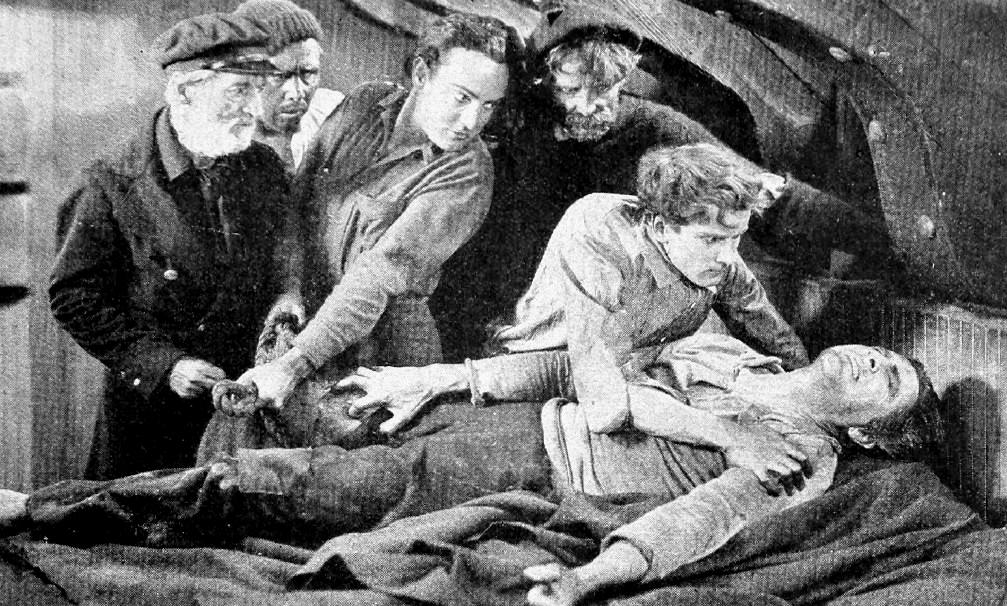
REVIEWS RECEPTION
The Sea Beast proved to be "extremely popular" with the public, and was generally well received by critics when released in January 1926. The romantic scenes between Barrymore and Costello were particularly well received. Douglas Fairbanks, Jr., whose father was an old friend of Barrymore's, said he saw the film half a dozen times.
The New Castle News of Pennsylvania called it a "remarkable picture" which "represents the finest in motion picture art", considering it to be the biggest picture of the year. The Post-Crescent of Appleton, Wisconsin heavily praised the cast and cinematography, referring to it as "a picture of rich, colorful beauty of heart-searing pathos, of poetry that sings in action of courageous deeds of emotions as violent and eternal as the terrific storms that sweep through the picture".
Mordaunt Hall of The New York Times noted the "energy, earnestness and virility" John Barrymore displayed in the role of Ahab Ceeley, and stated that his "real triumph in this photoplay comes in the second half of the picture, for he has a great opportunity as the grim master of a whaler with a mixed crew of half-mad yellow, white and black scum". Hall did believe, however, that the exploits with the whale were not as effective as they could have been, concluding that "this is a good production and one which contains much interest, but it is not a great photoplay".
Photoplay magazine wrote: "John Barrymore gives his usual finished performance. His agony is almost too realistic in the scene wherein the sailors cauterize the bloody stump of the leg torn off by the sea beast. It's too gruemsome for the sensitive souls... Dolores Costello's beauty is a delight to behold, and her acting is unbelievably good for a comparative newcomer. The scene in which she first sees the havoc wrought upon her lover by the white whale reaches artistic heights that leave one trembling. And the scene is perfect pictorially."
However, Movie Monthly was less enthusiastic about the film, declaring that it "does not come up to expectations, principally because its story turns out to be quite preposterous".

ARCHIVE
The film survives intact and was broadcast on television in the 1950s. The film is listed as being held by several archives around the world. It is available on DVD from
Televista.
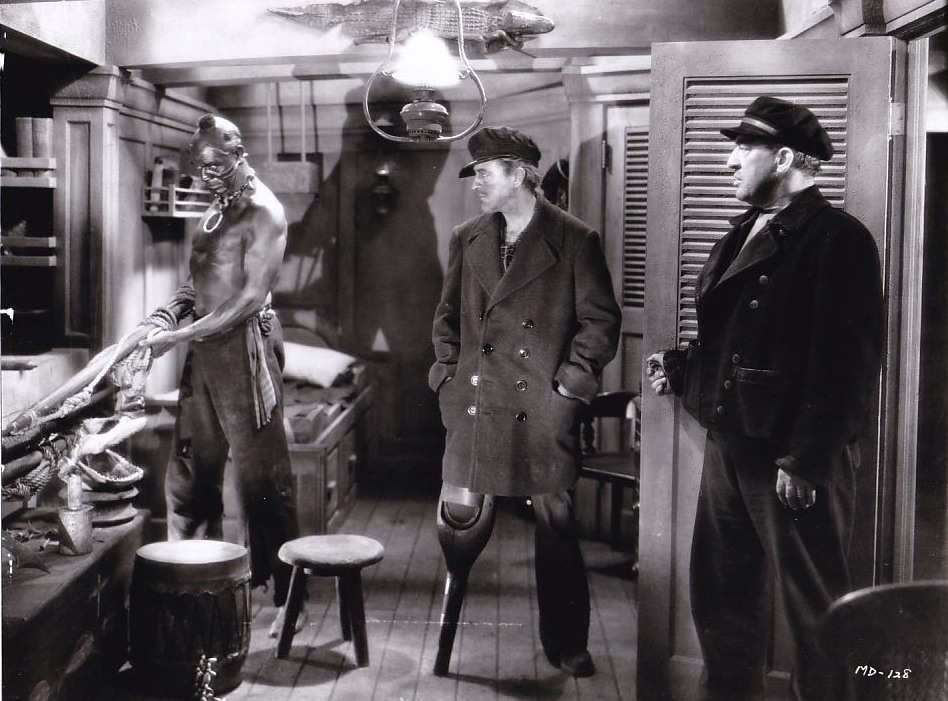
Queequeg
and Captain Ahab (John Barrymore) aboard the Pequod
in the 1930 production of Moby Dick,
this time with sound - a talkie and a movie.
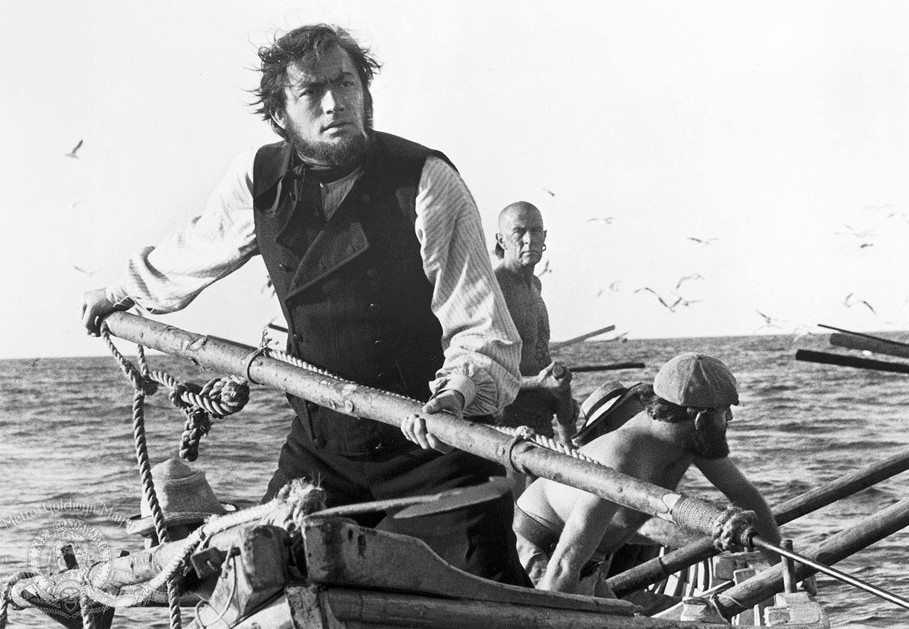
Gregory
Peck as the obsessed Captain Ahab, in search of the giant white sperm
whale.
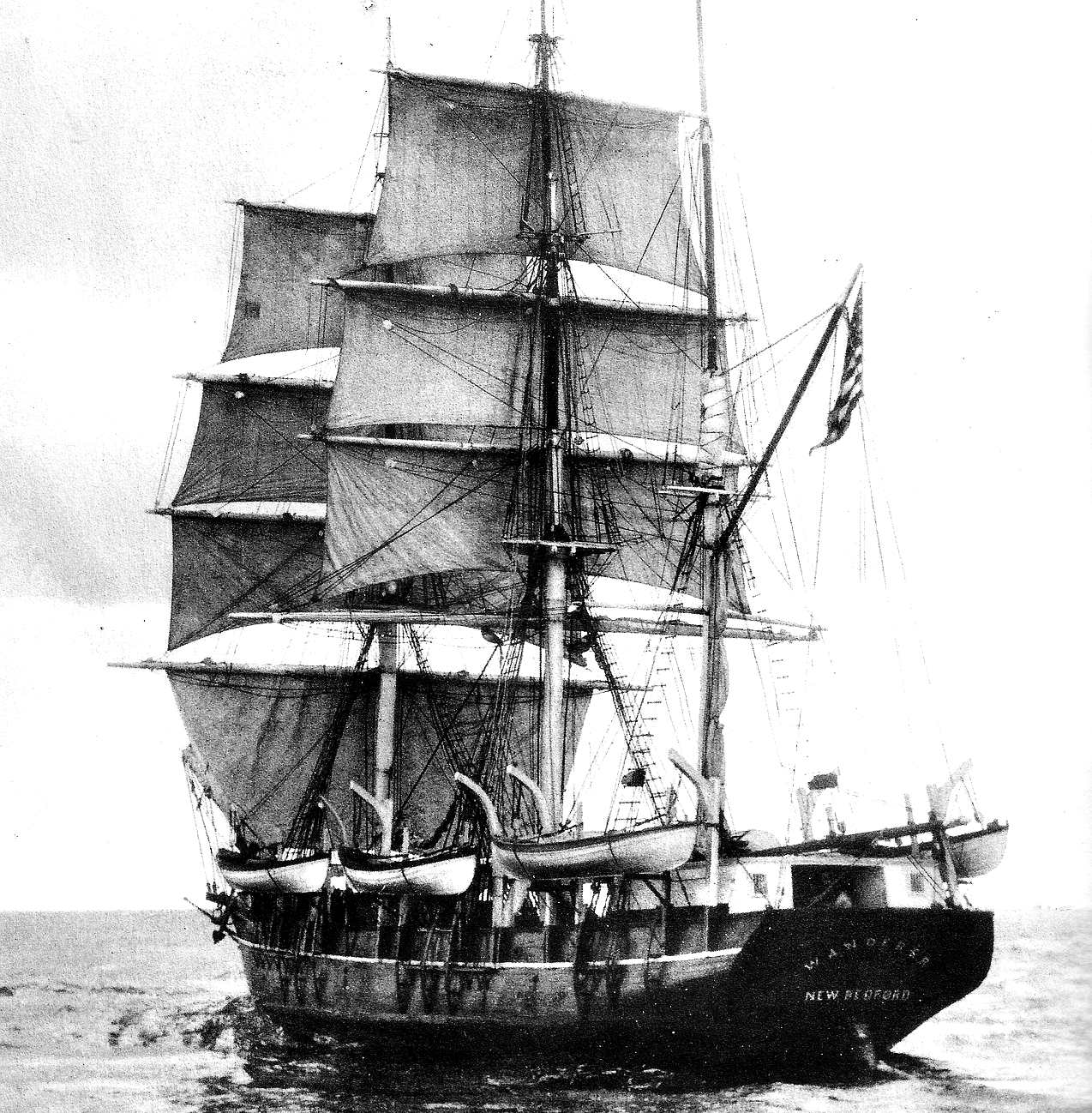
THE
ESSEX - This three-masted ship was made from white oak, especially known for its strength,
measuring 87 feet (26.5 metres) and just 239 tons displacement. There were 21 men on
board, including first-time captain, George Pollard, Jr.
On the 20th November 1820, a huge male sperm whale was spotted close to the ship. It was estimated to be 85 feet long where a typical male was no bigger than 65 feet.
The whale may have thought that the ship was another whale invading its territory. Whatever its reason, the whale began speeding toward the Essex, ramming the port side. After passing under the ship, the animal resurfaced and appeared stunned. It then resumed its attack “with tenfold fury and vengeance,” striking the bow and causing catastrophic damage before disappearing.
First Mate Owen Chase wrote: 'Narrative of the Most Extraordinary and Distressing Shipwreck of the Whale-ship Essex' in 1821. Thomas Nickerson, a cabin boy on the Essex, later wrote his account of the sinking and rescue, but the notebook was lost and not published until 1984. Chase's work inspired Herman Melville’s Moby Dick,
published in 1851.
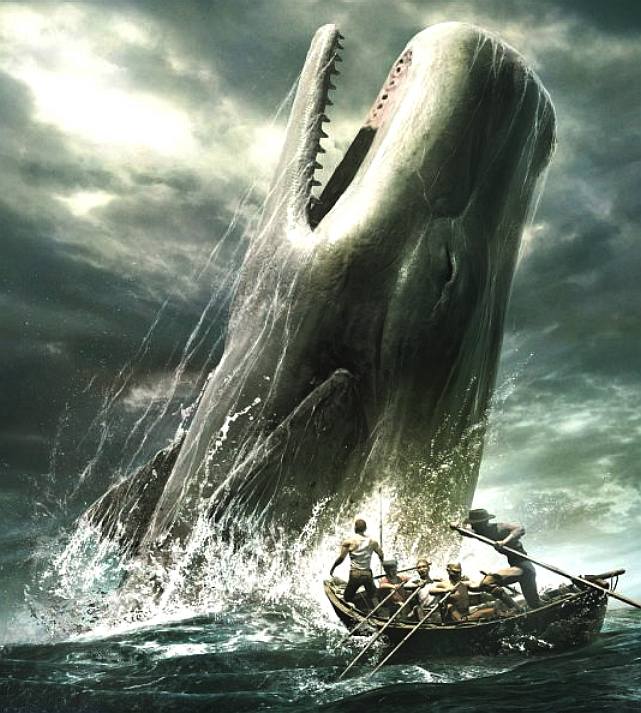
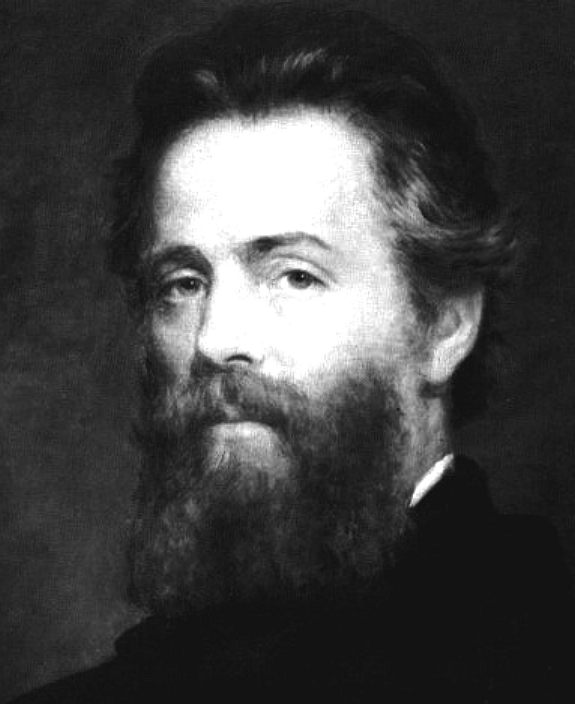
Herman
Melville
Please use our
A-Z INDEX to
navigate this site











